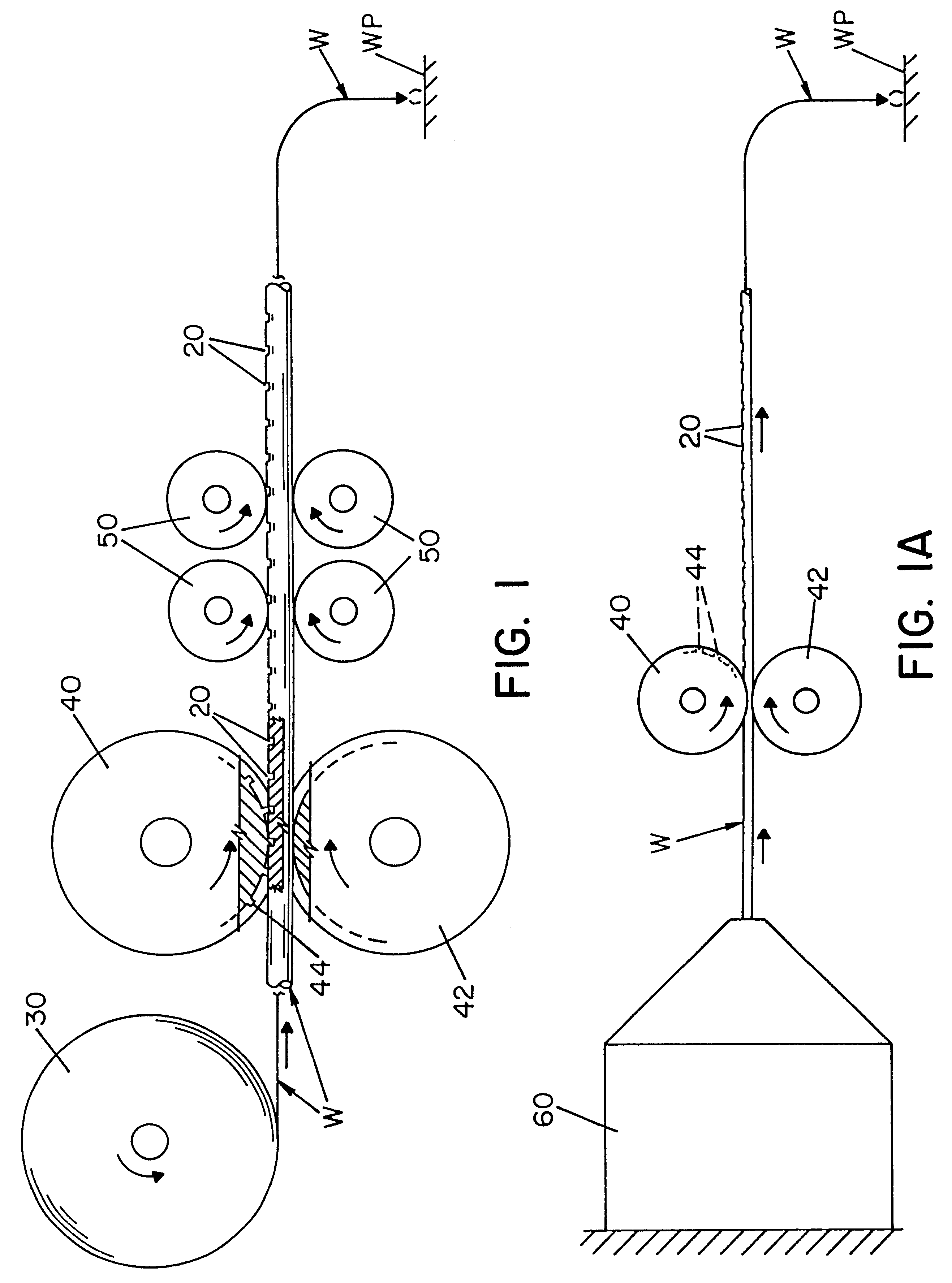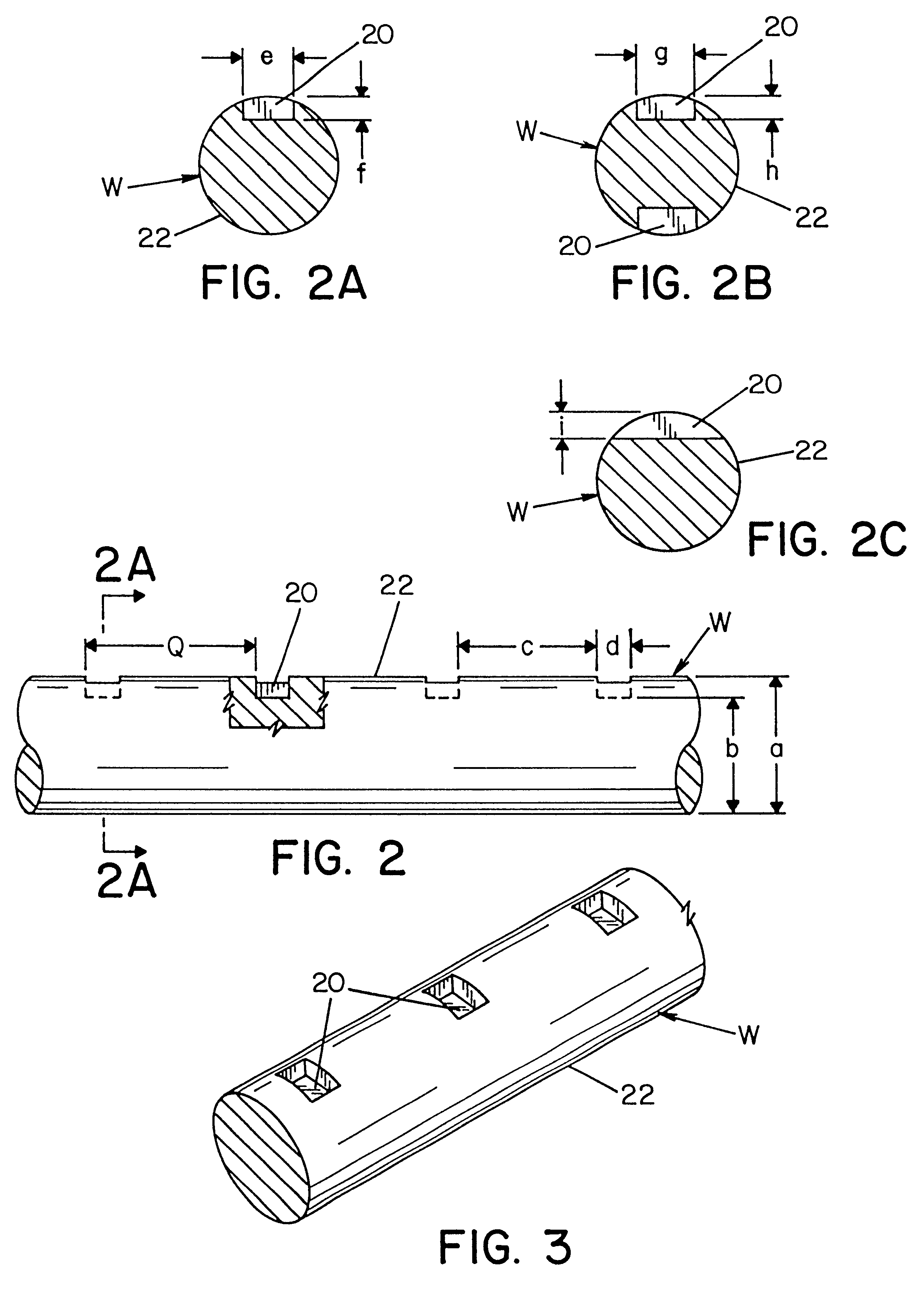Electrode and method of making same
a technology of electric arc welding and electrodes, applied in the direction of welding/cutting media/materials, manufacturing tools, welding apparatus, etc., can solve the problems of inability to filling or alloying agents, inability to resist moisture contamination and physical damage to fluxing, and inability to so as to increase the resistance per length of wire w, accurately control the resistance and welding characteristics of solid wires
- Summary
- Abstract
- Description
- Claims
- Application Information
AI Technical Summary
Benefits of technology
Problems solved by technology
Method used
Image
Examples
Embodiment Construction
Referring now to the drawings, wherein the showings are for the purpose of illustrating a preferred embodiment of the present invention and not for the purpose of limiting same, FIGS. 1 and 2 illustrate one procedure for forming the grooves or indentations 20 in wire W. FIG. 1 illustrates wire W being unwound from a wire spool 30 that is supplying wire to a welder. As wire W unwinds from spool 30, wire W passes between forming wheels 40, 42 which form indentations 20 in wire W. As can be appreciated, additional or fewer forming wheels can be used. FIG. 1 illustrates that only forming wheel 40 includes have a series of circumferentially spaced teeth 44 on the outer peripheral edge of the forming wheel thereby creating indentations 20 on one side of wire W as shown in FIGS. 2, 2A and 3. As can be appreciated, two or more forming wheels can include teeth to form a wire having indentations on a plurality of sides of the wire. As shown in FIG. 2B and FIG. 4, wire W includes indentations ...
PUM
| Property | Measurement | Unit |
|---|---|---|
| Length | aaaaa | aaaaa |
| Electrical conductivity | aaaaa | aaaaa |
| Diameter | aaaaa | aaaaa |
Abstract
Description
Claims
Application Information
 Login to View More
Login to View More - R&D
- Intellectual Property
- Life Sciences
- Materials
- Tech Scout
- Unparalleled Data Quality
- Higher Quality Content
- 60% Fewer Hallucinations
Browse by: Latest US Patents, China's latest patents, Technical Efficacy Thesaurus, Application Domain, Technology Topic, Popular Technical Reports.
© 2025 PatSnap. All rights reserved.Legal|Privacy policy|Modern Slavery Act Transparency Statement|Sitemap|About US| Contact US: help@patsnap.com



